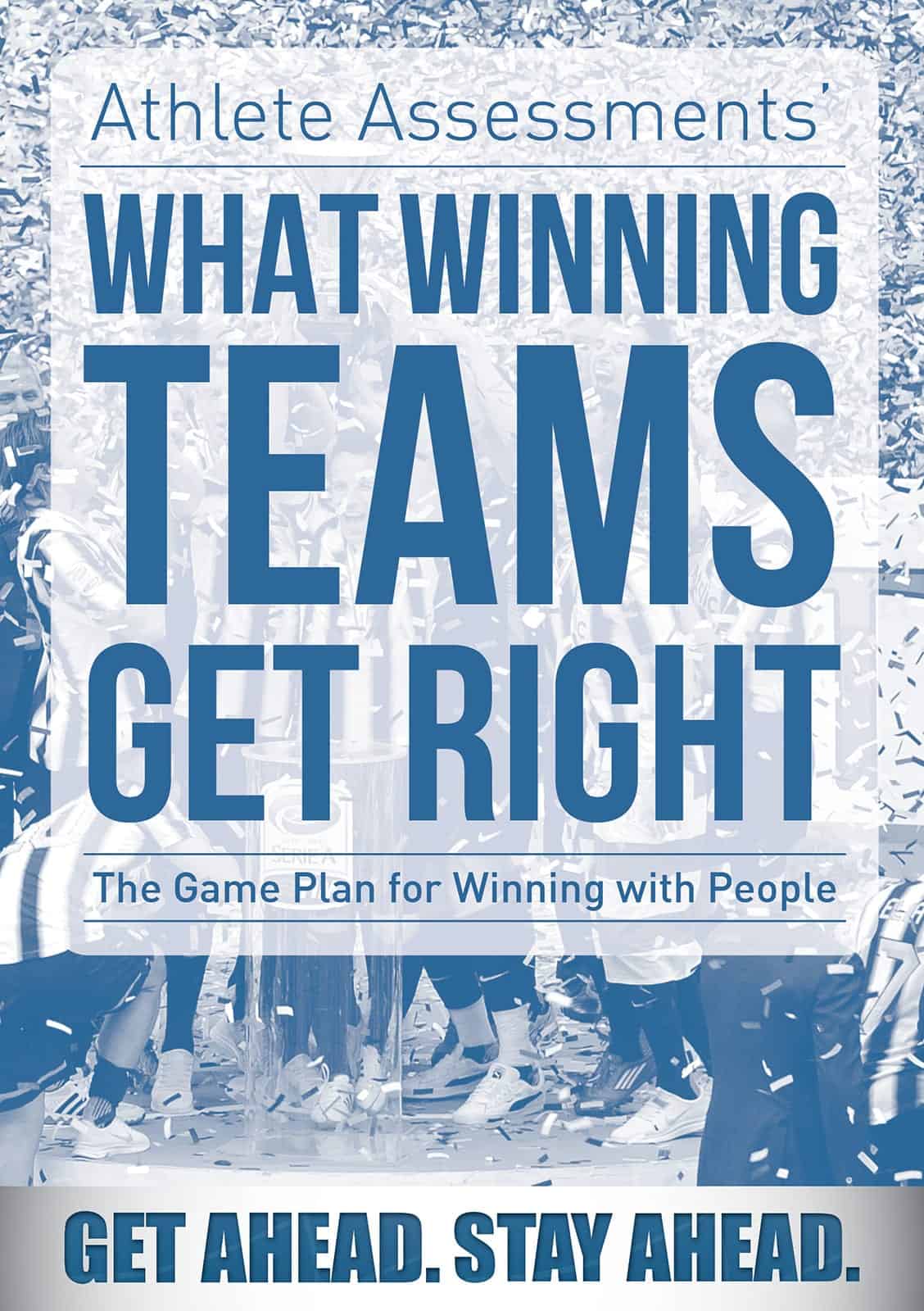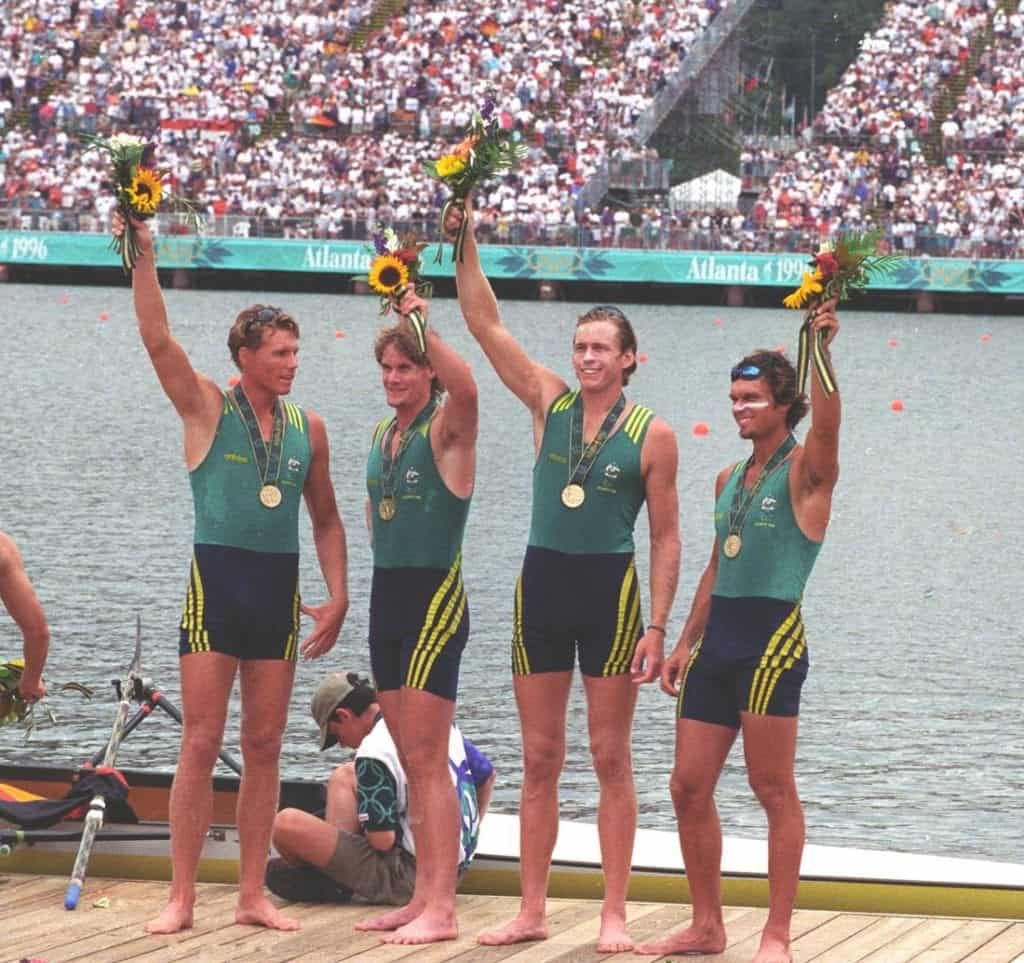By Bo Hanson – 4x Olympian, Coaching Consultant & Director of Athlete Assessments
Some do this extremely well, others do it poorly and many don’t do it at all. Yet performance reviews, for anyone, are one of the most critical performance enhancing processes to go through.
Often when people think of performance reviews, it is considered in the negative and their mind immediately jumps to whether or not they are doing a good enough job. The reality is performance reviews are an opportunity to review and reward what is going well, as well as what can be improved on. The great coaches are able to congratulate themselves as well as always looking for what they can still develop further. And their sporting organizations are excellent at this too.
If you would like to take the ‘cringe’ out of your Performance Reviews, Find out More about our Services.
This article is to assist sporting organizations to conduct timely, professional and meaningful performance reviews for their coaching staff (and all associated staff). We view the coaches and staff of a sporting organization to be the most critical factor in determining whether a sporting organization’s teams are going to enjoy sustained success on and off the field. Coaches can see our article on Sports Coaches – How to Prepare for your Best Coach Performance Review to help prepare for your best performance review.
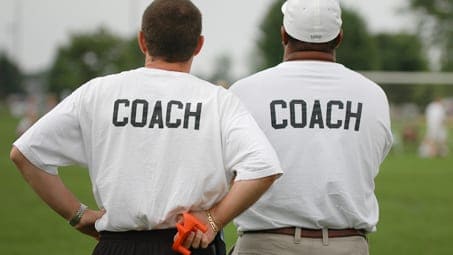
Let’s first look to the business world
In Geoff Colvin’s best-selling book Talent Is Overrated, he makes an important observation about the significant change in business and the difference between financial capital and human capital. Here are some relevant quotes from the book:
“Today, in a change that is historically quite sudden… The scarce resource is no longer money. It’s human ability…
For example, Microsoft has used about $30 billion of financial capital from all sources over its corporate lifetime, and it has created about $221 billion of shareholder wealth. By contrast, Procter & Gamble, one of the best managed and most admired companies in the world, has used far more capital than Microsoft, about $83 billion, yet has created much less shareholder wealth – about $126 billion.
Even more dramatically, Google has used only about $5 billion of capital but has created $124 billion of shareholder wealth….
Microsoft and Google understand perfectly well that their success is built on human capital… Bill Gates has said that if you took the twenty smartest people out of Microsoft it would be an insignificant company, and if you ask around the company what its core competency is, they don’t say anything about software. They say it’s hiring. They know what the scarce resource is…
For virtually every company, the scarce resource today is human ability. That’s why companies are under unprecedented pressure to make sure that every employee is as highly developed as possible…” (pages 12-13)
You may be wondering what this has got to do with sports coaches having performance reviews. Well, it isn’t a big stretch to compare sporting organizations to the corporate world and to see that a sporting organization’s most important asset and scarcest resource is its people, not its facilities and equipment. So not only do we need to ensure we’re hiring the best people to take pivot roles such as the head coach or development coaches positions, but we also need to ensure that we are looking after them, assisting them to develop and providing them with feedback on their performance.
It also calls for a look at where funding is allocated. Where does your sporting organization’s money go? Nice new equipment? Nice new facilities? Is it more important in a sporting organization to hire the best people, develop the people and provide them with the support they need to be their best?
In Daniel Coyle’s The Talent Code, he made the observation about talent hotbeds (hotbeds are tiny places that produce dis-proportionate ‘Everest-size amounts’ of talent) tended to be junky, unattractive places. So many of the talent hotbeds shared a disheveled ambience that he sensed a link between the dented, beat up state of the incubators and the sleek talent they produced. One answer he found came from what was dubbed the ‘Scrooge Principle’. “If we’re in a nice, easy, pleasant environment, we naturally shut off effort. Why work? But if people get the signal that it’s rough, they get motivated now. A nice, well-kept tennis academy gives them the luxury future right now – of course they’d be demotivated. They can’t help it.”
Now, we’d not saying take this ‘Scrooge Principle’ to the extreme, but if you have fair facilities and equipment, your financial funding may be better directed to your people resources and not the latest and greatest in training equipment.
And back to Geoff Colvin’s Talent Is Overrated:
“…the economy is increasingly based not on financial capital but on human capital, and how the abilities of the people in an organization… determine an enterprise’s success or failure…
Today’s best young employees, the ones on whom future success will depend, are demanding that employers help make them better performers. It seems that young people understand the new nature of today’s economy before a lot of CEOs did, and they insist on employers who will keep developing them… new employees consistently put continuous professional development at or near the top of their criteria for choosing an employer. Many other human resources chiefs report the same finding (and they all report that money is never among the top three criteria)…Organizations are finding that the advantages of building a big reputation for developing people are even greater then they may have thought. (pages 126-127)
The most important step in providing your people with development, is understanding how they are currently going and where they need to improve. This is achieved through on-going, regular performance reviews. This is just as vital for sporting organizations to recognize as traditional businesses.
Why conduct Performance Reviews?
If you would like more on Why Conduct Performance Reviews, you may be interested in our latest article dedicated to this topic. Click here to read it now.
When it all boils down, most sporting organizations exist to promote and develop teams to win their competition and/or provide the community with inspiration and opportunity to participate and enjoy their sport, with all the added benefits to good health and happy people. Whether it be for participation or winning championships, the success of achieving these outcomes is primarily due to the people involved and especially to vital contributors such as coaches.

It is the coaches and key staff that have the most impact on sporting results and enjoyment for those involved. Research backing this up can be found in the Canadian Olympic study taken post of the 2008 Olympics. This study found the most significant factor in achieving a medal winning performance or personal best performance was the quality of the coach-athlete relationship. Research conducted by the University of Sydney on the 2008 Australian Olympic Team shows very similar results. These studies further strengthen the link mentioned above about scarce resources being the people side.
The Australian Government also recognized this with their 2008 paper stating, “It is often the case that a junior athlete’s commitment and enthusiasm for a sport is based almost entirely on the quality of their coach. In many ways Australia’s future sporting success is up to our coaches and training officials.”
With the coaches’ role being so critical, it makes sense this ‘resource’ receives all the recognition, reward, continuous development and support to ensure they can be doing their best.
In business, organizations understand how important the performance review process is. They know performance reviews are essential for the effective management of all staff and to continue to improve their business results.
In the book Talent Is Overrated, Geoff Colvin also provides some critical points about the importance of receiving feedback on a continuous basis:
“Steve Kerr, former chief learning officer of Goldman Sachs and a highly respected researcher on leadership development, says…without feedback it is like bowling through a curtain that hangs down to knee level. You can work on technique all you like, but if you can’t see the effects, two things will happen: You won’t get any better, and you’ll stop caring.
Getting feedback on most activities is easy. Lift the curtain and a bowler knows immediately how he did… Difficulties arise when the results require interpretation… These are situations in which a teacher, coach, or mentor is vital for providing crucial feedback.” (page 70)
However, from the comments we hear, sporting organizations don’t necessarily follow the business world with putting importance on performance reviews. Some do this extremely well, others do it poorly and many don’t do it at all. If it is done at all, mostly it is only an annual basis, dreaded by all involved and telling someone what they did well or poorly from close to a year ago isn’t very helpful. Also, we’ve all seen it when people have misremembered what they thought in the past and often adjusted their recollections to reflect how things turned out in the end. For example, if the team won the grand final, it is easy to overlook other very important aspects of the head coach’s role. Or vice versa.
Reviewing a coach’s performance (and all staff) over the course of the season is of critical importance for the following reasons:
- As the research shows, the coaches’ role is critical to the success of the athletes and the team, both for the sporting organization and for the athletes as individual people.
- To ensure the success and achievement of the coach, both on and off the ‘field’ is recognized and rewarded (so often it seems to be “When the team does well, it is the great athletes. When the team doesn’t do well, it is the coach fault.”).
- A performance review serves to help the coach understand where they have met the required performance parameters set by their employer, the sporting club or organization. It avoids ambiguity, misunderstanding, “unsubstantiated opinions” and provides clarity and openness within a strong performance culture.
- Reviews identify how a coach can further improve their skills and abilities.
- Conducting reviews also improves the sporting organization’s overall performance and assists in planning future needs (such as succession planning) for all concerned. When conducted on a seasonal or annual basis, reviews enable the management to monitor codes of conduct, standards of agreed performance, expectations, objectives and the effective delegation of responsibilities and tasks.
- Performance reviews enable sporting organizations to understand their unique training and development needs for their coaches (and all staff). This ensures not only the athletes who are being coached are focused on constant improvement. It is a well-known fact that an athlete’s improvement is linked to the quest for knowledge and growth in their coaches.
- Conducting performance reviews has importance for coaches (and all staff) in terms of how the process can aide in their motivation, attitude and behavior development. Within any organization, communicating and aligning individual staff goals with the overall goals of the organization aides in fostering positive relationships between all staff and enhances the sense of contribution and meaning each individual derives from their roles.
When should Performance Reviews be conducted?
Formally conducted performance reviews look at each coach’s performance against their role description and subsequent objectives. These objectives should be agreed at the beginning of the season, when appointed as coach or at the previous review meeting. Unlike athletes who are (or should be) receiving constant feedback about their performance from competitions and their daily practice sessions, most coaches receive little to no feedback on a daily, monthly or even yearly basis as to how they are performing.
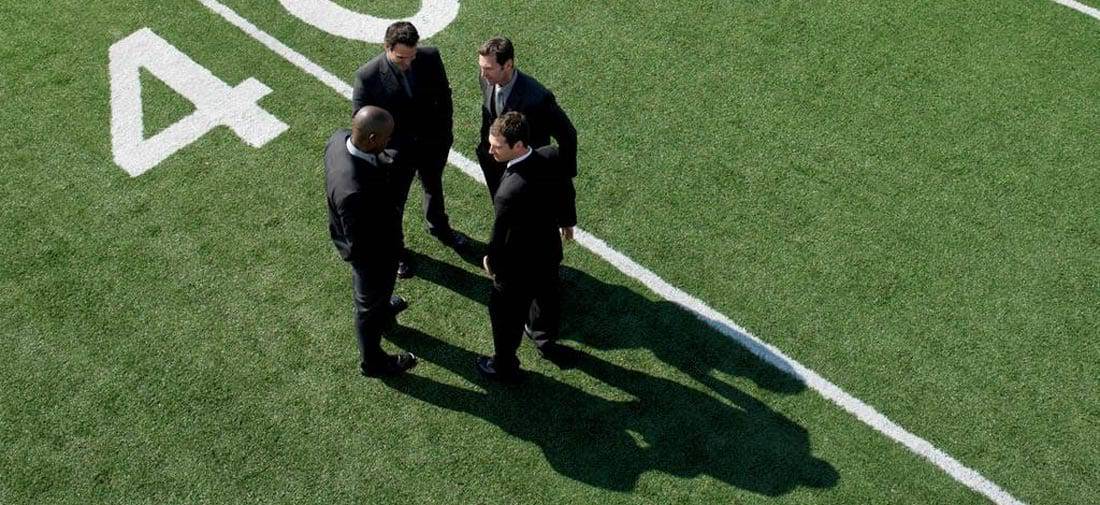
Contrast this against a well-structured workplace such as a large public bank for example. Here all employees are formerly measured against their updated job descriptions and their performance is reviewed on a yearly basis and often informally reviewed in weekly “touch point” sessions with their respective managers. For some sports coaches they find out they have not been performing to “expectations” (whose?) when it comes time to renew their contract. Much to their disappointment, their contract may not be renewed. This is not an effective manner in which to deliver high-performance outcomes, especially in sport, where the difference in a fraction of a second means winning or last place.
Best practice in sporting organizations is to have a formal meeting when the coaching assignment begins (or in the pre-season for continuing coaches) to clearly outline or review the coach’s performance measures, expectations and objectives. This should also be in writing. At the end of the season/year there is a formally conducted performance review, with at least one mid-point ‘check in’ review meeting half-way through this period of time. In-between, there should also be open communication and constructive feedback opportunities. You don’t want to over-do it, but you also don’t want anyone to experience ‘surprises’ regarding their performance.
Role Descriptions are the first step
Before a performance review process can be undertaken, the sporting organization is to have created up to date coaching role / job descriptions for each coaching, management and administrator position. Without an accurate role description, a performance cannot possibly be measured. This is the equivalent of not setting targets and goals for your athletes to achieve during the season. How can something be measured if there are no specific and measurable criteria to be assessed against?
If coaches and staff don’t currently have role descriptions and performance measures, this should be a key priority for your sporting organization to create. If you don’t know where to start, begin by asking each person to write down what they currently do in their role, and then review it together to ensure this is what is best for that position and what needs to be achieved. For example, there may be some non-value-add jobs that the head coach is doing that can be delegated to someone else to free up the head coach’s valuable time to focus on more important issues and responsibilities. There may be some things that have been missed that clearly need to be included.
It doesn’t necessarily have to be perfect, but there does need to be a starting point that can be improved over the longer term. Also ensure that it is ‘balanced’ and incorporates more than the scoreboard results.
How to Conduct a Performance Review
Now assuming each coach (and staff member) has a role description with performance measures identified, the following are the key elements to effectively conducting a performance review. You can even obtain an example of a performance review form by emailing us and requesting this.
1. Line of Review and Time Frame:
Identify who is going to be reviewed and who is the person doing the reviewing. Our recommendation is for the Head Coach to be reviewed by the CEO or Coaching Director and Assistant Coaches to be reviewed by the Head Coach. The high-performance Manager (Team Manager or equivalent), is responsible for reviewing support staff. The high-performance Manager is also reviewed by the CEO.
In most cases, the formal performance reviews are conducted on a per-season basis or annually for all staff in the sporting organization. As mentioned above, we also recommend at least a half-way review opportunity and on-going open communication and feedback. Coaches and staff must be aware in advance, as to when their review is to be scheduled and how to prepare. This should take into account the most appropriate time during the season to conduct the process. For example, immediately post season and often mid-season when there is a short break in competition (or bye game) are useful times.
2. Recording and conducting of Review:
Each review is to be recorded in writing and it is extremely useful to provide a template form for filling in the required information. This form reflects their role description and performance criteria. It is to be firstly completed by the person who is being reviewed, prior to their formal review. There should also be space provided to identify any changes to the scope of their role that can then be updated in their role description. Separately, the person conducting the review should complete a template form about the person and seek feedback from others, as and if appropriate.
Many of our clients who use the CoachDISC profile, also access the assessment’s ability to include a 360 degree review. Effectively, you can invite others (we call them ‘observers’ and they can include other coaches, management, senior athletes, support staff etc) to give you feedback as to how they see you perform your role. This is an automated service, included within the CoachDISC profile that sends email invitations to those selected to give feedback and automatically collates their responses into the CoachDISC Profile Report. This is also available for non-coaching staff with the ManagerDISC profile. Please Contact Us if you’d like more information about this.
Once this initial step is complete, it is time for the coach (or staff member) to formally sit down with their reviewer and have their one-on-one discussion session. During this session, the reviewer ‘reconciles’ the performance of the coach against the performance measures as outlined in their role description. This is definitely a two-way street. It is an opportunity to gain mutual understanding of both perspectives in terms of recognition of successes, whether the performance measures have been met, what needs to be done differently and what development opportunities can be used to further improve the performance of the individual. The performance review session (or sessions if more time is needed) continues until agreement is achieved.
Upon completion of this process, the review form must be securely filed and stored confidentially.
3. Conducting of Performance Review Sessions:
Here are the key points for the performance review session:
- Make effort to ensure that there will be no interruptions and adequate time has been put aside. Begin with a warm welcome, showing sincere interest. (I know this sounds very basic but you’d be surprised how often this important initial step is missed.)
- Ask the coach to comment on his/her progress since the last review or the beginning of the season, based on their actual role description and results achieved. Ensure you and the coach focus on performance and not on personal characteristics. Be specific about results using measurable data. Ensure that their successes are acknowledged and recognized.
- Be balanced and ensure that each ‘area’ of their performance receives adequate time and attention. For example, if the coach’s team won the national or international championship, avoid skipping over the performance review too quickly as there are always areas that can be focused on to ensure the coach receives recognition for the positive outcomes of other areas in their role description such as player development etc and also their own ongoing professional development. In the same token, don’t spend all of the review focused on why the team was on the bottom of the table, if that was the case, and ignore other critical performance criteria.
- Discuss the coach’s perspective and your perspective on the season so far or which has just concluded. See if the perspectives of performance are aligned or different. Where different, explore and where appropriate use performance feedback, being straightforward and stating any concerns directly. Never threaten, intimidate or use status in any manner – don’t threaten self-esteem. Always ensure the coach knows the organization is aware of their unique contribution and efforts.
- The future performance standard: Based on their role description, discuss what are specific and reachable goals for further growth and improvement, decide how to accomplish, create a method for evaluation and outline what support is needed and can be provided.
- Concluding the review session: Both parties need to sign the review form which signifies all parties have agreed and understand what is expected of them in the season to come.
Legal Implications of Performance Reviews
We are not in a position to provide legal advice in this article and this should not be relied upon for your organizations specific circumstances. Each sporting organization should seek legal advice as appropriate to be aware of the legal implications, specifically to them.
Very basically, law requires performance reviews to be: job-related and valid; based on a thorough analysis of the job; standardized for all employees; not biased against any race, color, sex, religion, or nationality; and performed by people who have adequate knowledge of the person or job. Within the process there must exist a route for recourse if a coach or employee feels he or she has been dealt with unfairly in a review process, e.g., that they can go to another appraiser for another perspective. Finally, the entire review process must clearly be outlined in the sporting organization’s operating procedures and policies (assuming they have been created).
Final Points
Effective and consistent performance reviews are one of critical differentiators between best practice sporting organizations and others. It is an extremely valuable and rewarding process for all involved. Remember aperformance review should be a positive experience, balanced between successes achieved and what can be further improved on. Coaches are the ones that generate the success of their athletes and teams, and deserve recognition, support and on-going development. Great coaching is never arrived at.
Keep in mind, when planning and conducting performance reviews, seek to help the ‘whole-person’ to grow in their desired direction. Increasingly, the best employers recognize that growing the ‘whole person’ promotes positive attitudes, advancement, motivation, and also develops lots of new skills that can be surprisingly relevant to working productively and effectively in any sort of organization. This is no different for the sports industry and for coaches.
This is also aligned with being an athlete centered coach philosophy in that athletes tend to thrive in a coaching environment where their coach and organization are interested in them as a person first and athlete second. The sporting organization sets the example in the way they look after their coaches, as to how their athletes will be looked after by their coaches. Actions speak loader than words.
In the next article, we discuss how a coach is to prepare for their performance reviews and if you email us at coach@athleteassessments.com, we will also send you a template to use to your coaches and other staff.
Always remember, we are here to support you and please Contact Us if you have any questions or would like to discuss this further.


